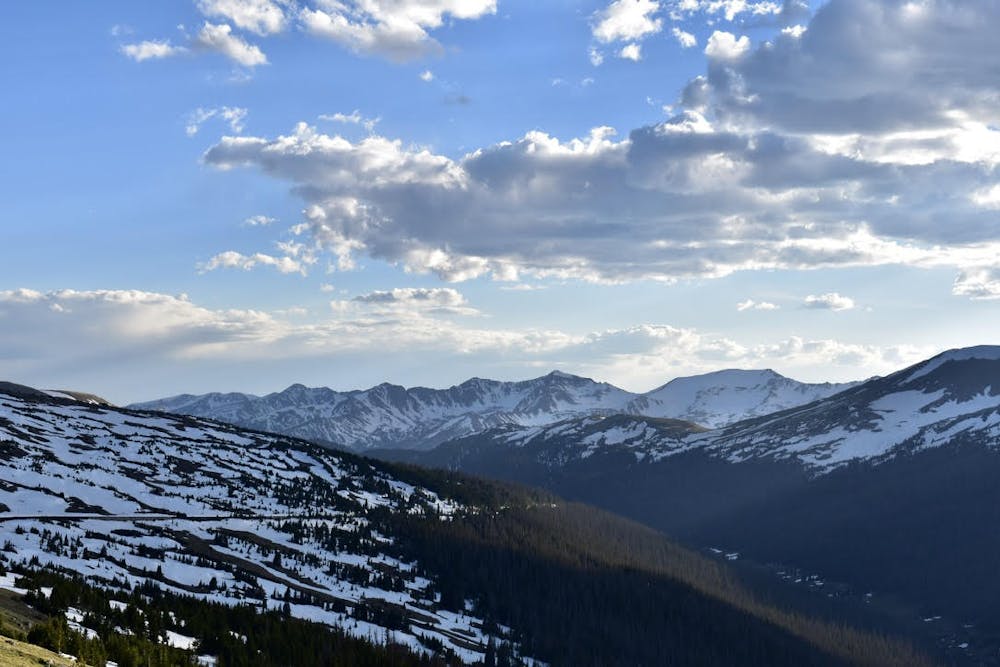DISPATCH | Carter Gipson
The wind blew hard and steadily on the barren Kansas plain. I held fast to the wheel, trying to keep the car pointed straight as gusts of wind tugged it left and right. It had been a couple hours since I had left the mask-less gas station clerk behind at the last rest stop, and it would be another hour or so before we’d see any evidence of civilization.
The white noise of the air conditioning barely drowned out the soft chords of Tom Petty’s guitar. Driving through the unchanging landscape under the hot afternoon sun gave me the same feeling that I get running intervals on a treadmill: I was moving quickly, yet going nowhere at all.
But the miles passed. I would soon blink my eyes and find myself out of the plains and in the green embrace of the Smoky Mountains, just as quickly as I had descended from the Rockies. Watching one landscape appear on the horizon and disappear into the rear view wasn’t new for me. In fact, this was my second road trip across the country in as many years.
The first, funded by Princeton’s Dale Award last summer, took me on a 13,000 mile adventure through cities as small and quaint as little Ely, Minn. and as large and iconic as Los Angeles, Calif.; through parks as hot and barren as Joshua Tree and as high and snowy as Mount Rainier; and through all the miles of meandering asphalt in between.

So, when the world shut down and my summer plans were cancelled, I gave in to the itch that had fueled my Great American Road Trip a year earlier — the itch to see my country, in its fullness, with my own eyes. And what a task that is.
Whereas my previous road trip had taken me largely around the perimeter of the country — through the Great Lakes from the mid-Atlantic, west across the Dakotas, Wyoming, and Montana, down the Pacific coast, and back across the southwest before finally turning northward back home — this time I circled around the country’s broad middle.
I hiked through the rolling Loess Hills in western Iowa, tried on cowboy hats in Cheyenne, Wyo., climbed through the mountain snow in Rocky Mountain National Park, savored the taste of barbecue in Kansas City, and walked the Charleston waterfront. More than this, I discovered and learned to love all the small places in between.
It is the great expanses of undeveloped landscape and the charming towns with little more than a grain elevator and scattered houses to their name that made the trip worthwhile.

It would be so satisfying to offer some kind of grand insight into the American people and all the places they inhabit, but my only conclusion is that America defies facile generalization. It is so big, so diverse, so multifarious, that even after all these miles and all this time I’ve spent trying to make sense of this country that I call my home, I can only offer mere observations. But perhaps this is enough. Like unvisited rooms in a sprawling mansion, vast swathes of the country are so rarely seen and far less understood.
Both at Princeton and beyond it is so easy to remain mired in the monolithic culture of comfortable coastal cities, leaving only for the occasional visit to the ski towns and lakeside villages of greater America that have already been sterilized of genuine local character by the colonization of retirees and wealthy vacationers.
Rarely do most of us venture further, to those areas where only the occasional oil well dots the landscape, or where there is one speed limit for cars in the summer and another for snowmobiles in the winter, to the forgotten post-industrial towns and small agrarian villages nestled along lonely county roads and in quiet country hollers.
Rarely glamorous, but often beautiful and always rewarding, a road trip across these United States is the only true way to see this country. Make like Kerouac, and I promise you’ll see it too: an America richer and more various than you could have ever imagined.
Carter Gipson is a senior in the Department of Economics. He can be reached at cgipson@princeton.edu.
Editor’s Note: The Prospect is reintroducing “Dispatches,” a series in which ‘Prince’ staffers reflect on their travel and work experiences over the summer.








